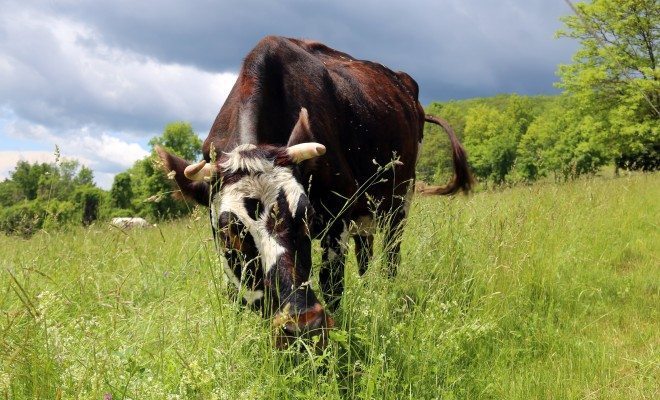
News
Correlation or Causation: Less Meat Does Not Equal More Water
Americans eat too much meat. It is a central staple in every meal of the day. This cultural practice, coupled with our economic system, creates a disastrous outcome: factory farming of animals. I have a problem with this system of meat production. However, the purpose of this article is not to talk about how we treat domestic livestock – rather I want to address a faulty argument that we hear quite often as a reason for diminishing meat production. I want to point out the fallacious nature of this argument, in order to prevent people arguing for less meat consumption from looking foolish.
For instance, I have recently come across two articles that both advocate for reduced meat consumption but on different grounds, and I think it’s worth pointing out that the fallacy-laden argument should be dismissed. In their article, A Tax On Meat Would Reduce Methane Emissions From Livestock, ThinkProgress reports that many environmental scientists are advocating for a decrease in meat consumption because it would reduce greenhouse gas emissions. If we want to avoid the problems that accompany climate change, then this is a good argument for eating less meat.
Compare this with a recent, article in the New York Times titled Meat Makes the Planet Thirsty which advances approximately the following thesis: as we continue to face horrible droughts across the country, a good way to reduce our water footprint would be to eat less meat, as meat production requires much more water than growing fruits, vegetables, and crops. The rationale for this argument is basic math. The author points out that, “beef turns out to have an overall water footprint of roughly four million gallons per ton produced. By contrast, the water footprint for “sugar crops” like sugar beets is about 52,000 gallons per ton; for vegetables it’s 85,000 gallons per ton; and for starchy roots it’s about 102,200 gallons per ton.” I have to say I’m very surprised that this argument has made its way into the New York Times because it is highly fallacious.
There are a couple things we need to understand about comparing the water footprint of domestic livestock to other crops.
First, the numbers that McWilliams, the author of the article, uses come from calculations that measure the water intake of cattle eating a grain-fed diet, as opposed to cattle that were raised on their natural diet of pasture grazing. We ought to observe that it makes them drink more water – and we see this makes a huge difference in the water footprint. According to Lierre Keith, author of the Vegetarian Myth, cattle that are raised on pasture will end up consuming 122 pounds of water per pound of meat (and that only includes the muscle and not the organs). If we convert that to tons, we find that the grass-fed cow consumes 244,000 gallons per ton of meat, which is a staggering difference as compared to the four million gallons per ton in McWilliams calculations.
The second thing we have to realize when we talk about the water footprint of foods, is the varying caloric and nutrient content. When we are purchasing food, we are buying energy in the form of calories. Thus, we should think of comparing the relative energy outputs of these foods, not the relative weights when measuring their respective water foot-prints. When we do this, we find that meat is more cost-effective than foods like vegetables and fruits (in terms of water needed to produce), and comes out almost even with crops like wheat. Keith writes,
If you want to compare pounds of water for calories (energy) produced, wheat and grass-fed beef end up almost even. For wheat, sixty pounds of water produces 1524.45 calories, or 25.7 calories per pound of water. For grass-fed beef, it’s twenty-two calories from a pound of water.
This, in my opinion is the heart of the problem with McWilliams argument. Simply comparing foods water-footprint by pounds of a given food against gallons of water is grossly oversimplifying the issue. We need to recognize that not all foods are the same.
This leads to third problem with the argument.
Not only should we be looking at the caloric content of foods, we should also consider the nutrients residing within the calories. Animal products provide very important nutrients such as proteins and fats, that are not found within foods like vegetables, fruits, and grains. Consider the varying levels of protein and fats found within beef as compared with wheat: “21 g of protein vs. 13.7 g, and 8.55 fat vs. 1.87 g, respectively.” Additionally, the proteins that are found within foods like wheat are lower quality because they do not contain the full spectrum of all thirteen amino acids, “and [wheat proteins are] largely inaccessible because it comes wrapped in indigestible cellulose.” (Keith) We can see from the comparison of caloric and nutritional content that beef is a better option when it comes to the water-footprint.
People who wish to see the end of factory farming and reformed meat consumption should drop the water-footprint argument and appeal to more powerful arguments like methane emissions of livestock.
—
Bo Donoghue
Featured Image Courtesy [Flickr/USDA]








Comments